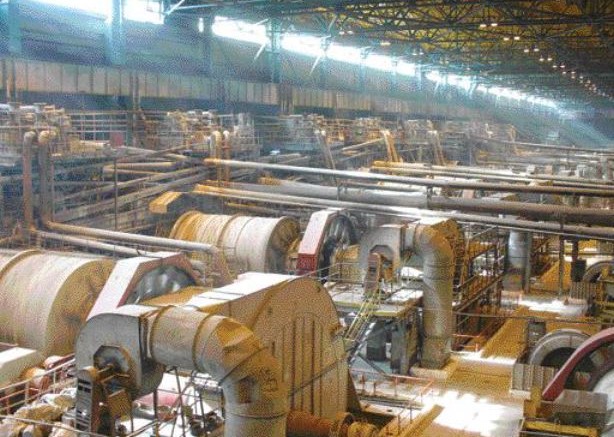SITE VISIT
Ulaanbaatar, Mongolia — A giant painting of Vladimir Lenin’s head still looks down over the sprawling Erdenet copper and molybdenum mining complex in northern Mongolia. But as copper prices bring in big profits and an American joint venture takes hold on-site, it’s clear that the father of Russian communism has lost his grip.
The deposit — situated 400 km northwest of the Mongolian capital, Ulaanbaatar — was discovered by Czech and Russian geologists in the 1960s. By 1973, the Mongolian government had cut a deal with the Russian government to mine it, and by 1978, ore was being processed from its Northwestern pit — a pit so robust that some 28 years later, it still has another 35 years left of mine life.
That 1973 deal between Russia and Mongolia is manifested today in Erdenet Mining, a private company in which the Mongolian government holds a 51% stake and the Russian government, 49%.
Although both governments have equal representation on the 14-member board, the workforce is decidedly slanted in Mongolia’s favour. Roughly 85% of the 6,000-strong workforce is Mongolian, with most living in the neighbouring city of Erdenet.
While it might be difficult to imagine a company with roots so firmly entrenched in a socialist past functioning in a capitalist world, the high price of copper and the size of the deposit have helped Erdenet reap some decent profits.
Erdenet’s senior engineer, Baataz Sergelen, admits times were tough at the mine between 1998 and 2002 when copper prices were low, but the company has clearly turned the corner since then. Profits of nearly US$200 million were reported in 2005, up roughly US$50 million from 2004.
Such profits are being made in spite of some inefficiencies noticed during a recent visit by The Northern Miner (several dump trucks, for example, idling inactively in the pit for too long — rarely seen at open-pit mines operated by Western companies).
But with 500 million tonnes of ore containing 2 million tonnes of copper with an average grade of 0.79%, Erdenet has some leeway. The pit also contains an average grade of 0.02% molybdenum. The copper cutoff grade used is 0.35%.
Ore is processed on-site at a mill built in Communist times, but updated throughout the ’90’s and into the new millennium. Erdenet says copper recovery is at 85.5% with molybdenum at 25%.
After initially coming out of the mill in a mixed concentrate, copper and molybdenum are separated and exported to Switzerland, Holland, South Korea and the United States.
In 2005, the company shipped 510,000 tonnes of concentrate containing 24% copper and 3,000 tonnes of molybdenum concentrate containing 47% molybdenum. The cost of copper production came in at US$2,300 per tonne.
But Erdenet isn’t content to rest on such numbers. In an effort to maximize production, the company is planning to bring large-scale heap-leach and solvent-extraction electrowinning (SX-EW) technology to the site. The project is slated to be finished by 2008 or 2009 and is anticipated to produce 40,000 tonnes of copper cathode per year.
Currently, a smaller, “experimental” SX-EW plant is being used to extract copper from waste rock left over from the pit’s copper-rich cap.
The waste rock is being leached on-site by a Mongolian and U.S. joint-venture company called Erdmin. Erdenet has a 25% stake in Erdmin. And while the factory once had to rely on foreign expertise — largely in the form of Americans and Australians — now, like Erdenet, Erdmin has made the transition to a predominantly Mongolian workforce.
Originally, Erdmin was expected to produce 10,000 tonnes of copper cathode annually, but skepticism on the part of Erdenet’s management resulted in the project being scaled back to 3,000 tonnes when it began production in 1997. Currently, the operation produces 3,000 tonnes of copper cathode and 2,000 tonnes of copper rod per year, which is exported mostly to South Korea.
In those eight years since commissioning, Erdmin has proven that Erdenet’s reservations about using heap-leach technology during Mongolia’s fierce winters were largely unfounded. During the winter, the company drills holes deep into the waste rock and inserts sulphuric acid to prevent freezing. Production continues at the small plant year round.
Geology
The Erdenet project site is composed of four porphyry deposits hosted in granite diorite and formed in the Jurassic period sometime between 200 and 240 million years ago. The deposits are spread across a distance of 5 km, and all three of the mixed porphyries share a similar inverted cone shape, which decreases in width and grade as it descends.
To the south of the Northwestern pit lies the Central deposit. The deposit has an estimated resource of 90 million tonnes containing 369,000 tonnes copper grading 0.41% and 0.015% molybdenum.
To the south of the Central deposit lies the Oyut deposit — a body containing 157 million tonnes of ore, with 770,000 tonnes of copper grading 0.43% and 0.002% molybdenum.
The final Southeastern deposit does not yet have a resource estimate, but exploration drilling is ongoing.


Be the first to comment on "Erdenet mining copper under Lenin’s gaze (October 16, 2006)"